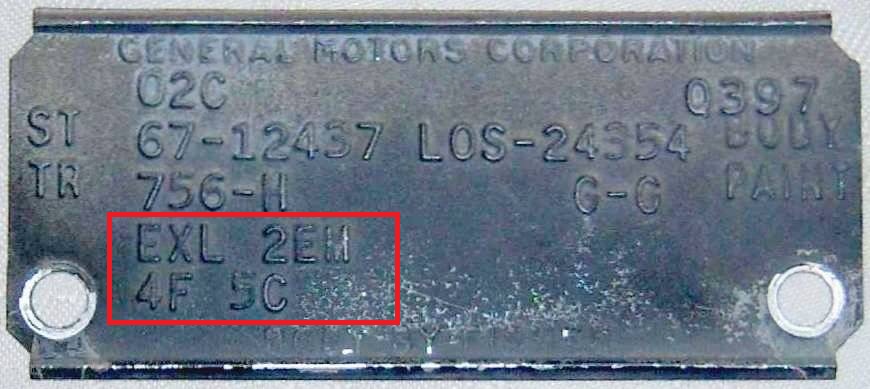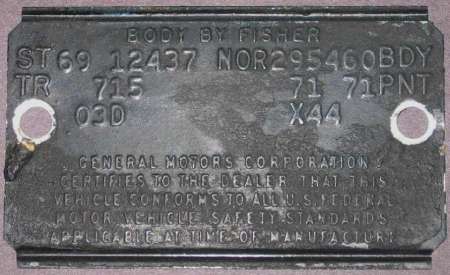
| C R G | CRG Reports | Exterior | Engine | 1967 Model ID |
| Numbers Decode | General Info | Interior | Transmission | 1968 Model ID |
| Drivetrain Decode | Options | Underhood | Chassis | 1969 Model ID |
Fisher Body Numbers on 1967-1969 Camaros
|
Reviewed by the CRG Last Edit: 08-Dec-2017 Previous Edit: 03-Dec-2011, 08-Jan-2011, 01-Nov-1999 Original Release: 14-Oct-1999 |
| 1967 LOS Cowl Tag with body # 24354 (thread A) |

|
Highest 1967
Known Cowl
1967 LOS Tag
Thread Body # Description Model #
------ -------- ------------------------------ -------
A 39907 coupe with standard interior 12437
B 1954 convertible with standard interior 12467
C 20988 coupe with custom interior 12637
D 2188 convertible with custom interior 12667
----------------
Total: 65037 (compare to the 65008 built at LOS in 1967)
|
|
|
| 1969 NOR Cowl Tag |

|
Fisher Body Numbering Systems
1967-69 Camaro
LOS (VN) NOR
---------------------- ----------------------
numbered consecutively numbered consecutively
1967 by cowl tag body style across all body styles
(4 styles)
numbered consecutively numbered consecutively
1968 by cowl tag body style across all body styles
(2 styles)
numbered by order confirmation number
1969 that is generated centrally for both
LOS (VN) and NOR assembly plants.
|
|
|